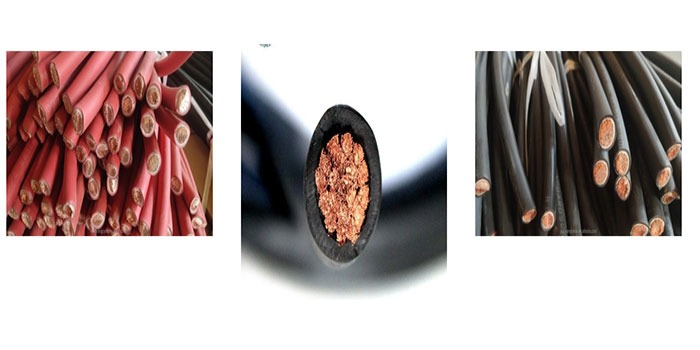Types of Welding Cables and Their Applications
When it comes to welding, selecting the right equipment is crucial for achieving optimal results. One of the most important components in the welding process is the welding cable. Understanding the different types of welding cables and their applications can significantly impact your welding performance and safety.
10/17/20243 min read


Types of Welding Cables
1. Oxygen-Free Copper Welding Cables
Oxygen-free copper welding cables are known for their excellent conductivity and flexibility. These cables are often used in high-current applications and provide superior performance in environments that require frequent movement. They are ideal for heavy-duty welding tasks, such as MIG and TIG welding.
2. Stranded vs. Solid Welding Cables
Welding cables can be categorized into stranded and solid types. Stranded cables consist of multiple smaller wires twisted together, which enhances flexibility and makes them easier to handle. Solid cables, on the other hand, offer greater durability and are often used in stationary applications where movement is minimal.
3. Rubber Insulated Welding Cables
Rubber insulated welding cables are designed for heavy-duty applications. They provide excellent resistance to heat, oil, and abrasion, making them suitable for industrial environments. These cables are often used in outdoor welding tasks due to their weather-resistant properties.
4. PVC Insulated Welding Cables
PVC insulated cables are lighter and more flexible than rubber insulated ones. They are suitable for less demanding applications, making them ideal for hobbyists and DIY enthusiasts. However, they may not withstand extreme temperatures or harsh conditions as well as rubber cables.
5. Multi-Conductor Welding Cables
Multi-conductor welding cables are designed for specialized applications that require multiple connections. These cables typically feature several conductors within a single jacket, allowing for simultaneous connections in multi-process welding operations.
How to Choose the Right Welding Cable
Selecting the right welding cable is essential for ensuring safety and efficiency in your welding projects. Here are some key factors to consider:
1. Current Rating
The current rating of the welding cable must match the requirements of your welding machine. Always refer to the manufacturer's specifications to determine the appropriate cable size for your specific welding process.
2. Length of Cable
Consider the length of the cable required for your welding task. Longer cables can lead to voltage drop, which may affect performance. Aim to use the shortest cable possible while still providing adequate reach.
3. Type of Welding
Different welding processes have varying requirements for cables. For example, MIG welding typically requires more flexible cables due to movement, while TIG welding may benefit from cables that provide better heat resistance.
4. Environmental Conditions
Consider the environment in which you will be working. If you are welding outdoors or in a location with exposure to chemicals, selecting cables with suitable insulation, such as rubber, is critical for safety and durability.
Welding Cable Maintenance and Care Tips
Proper maintenance of welding cables is essential for ensuring their longevity and performance. Here are some tips to help you take care of your welding cables:
1. Regular Inspection
Inspect your welding cables regularly for any signs of wear, fraying, or damage. Address any issues immediately to prevent accidents or reduced performance.
2. Cleanliness
Keep your welding cables clean and free from dirt, oil, and debris. Use a damp cloth to wipe them down after each use, especially if you’ve been working in a dirty environment.
3. Proper Storage
Store welding cables properly when not in use. Avoid coiling them too tightly, as this can cause damage. Instead, use a cable reel or hang them loosely to prevent kinks and tangles.
4. Avoid Overheating
Welding cables can overheat if used improperly. Ensure that your cables are rated for the current being drawn and monitor them during use. If they become excessively hot, discontinue use and allow them to cool down.
5. Safe Handling
Always handle welding cables with care. Avoid dragging them across rough surfaces and ensure that they are not pinched or trapped during operation.
Conclusion
Understanding the different types of welding cables and their applications is essential for achieving successful welding results. By choosing the right welding cable for your specific needs and following proper maintenance practices, you can enhance your welding performance and safety. Remember, investing in high-quality welding cables will pay off in the long run, ensuring that your projects are executed with precision and efficiency.
